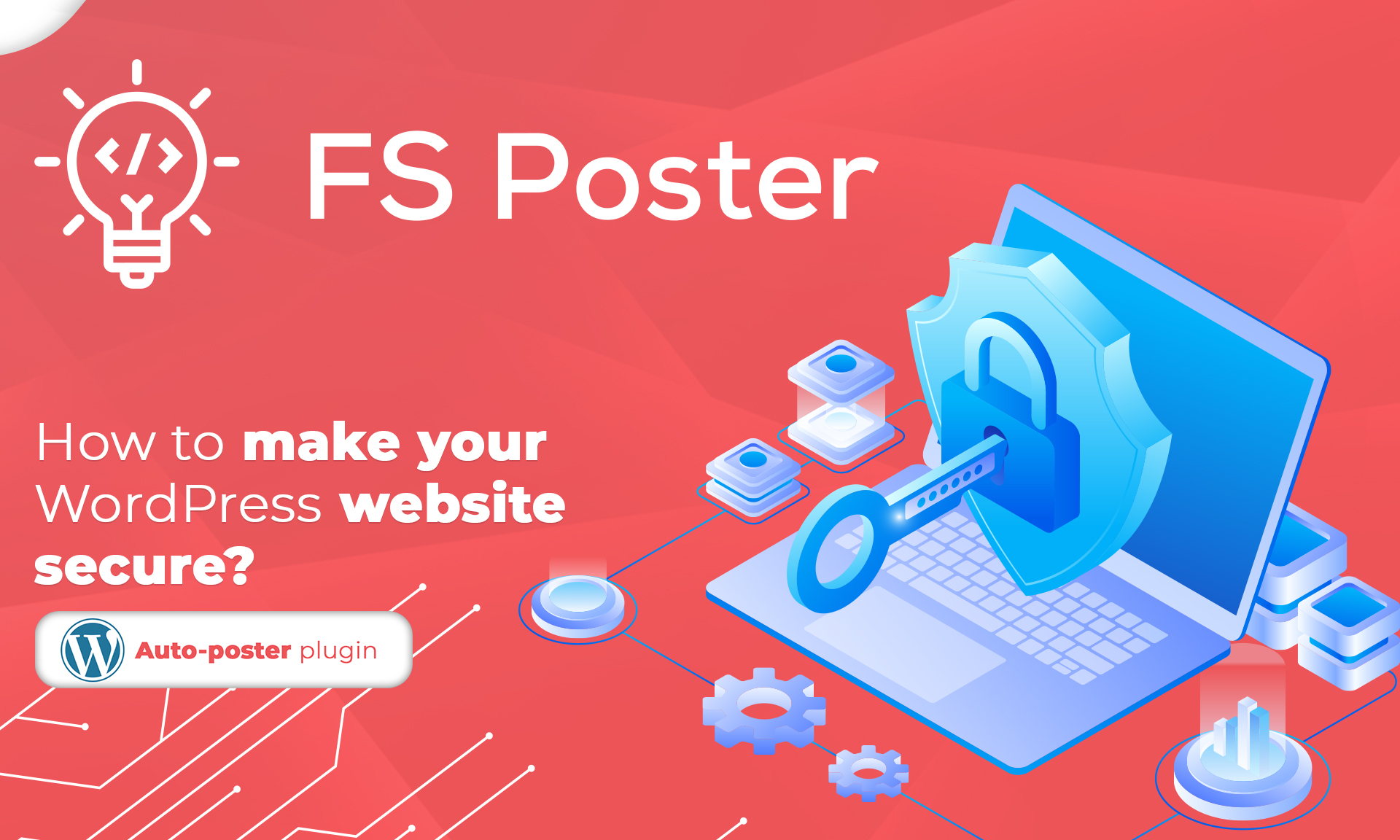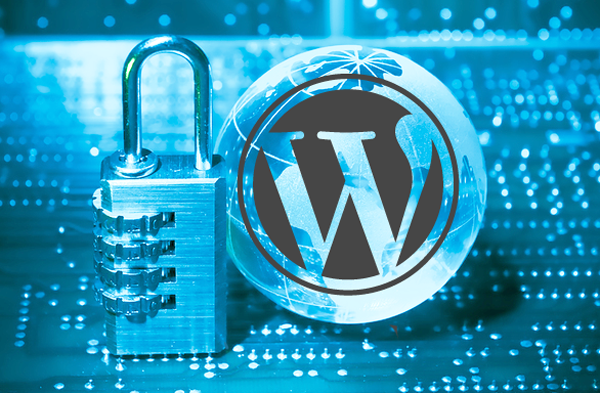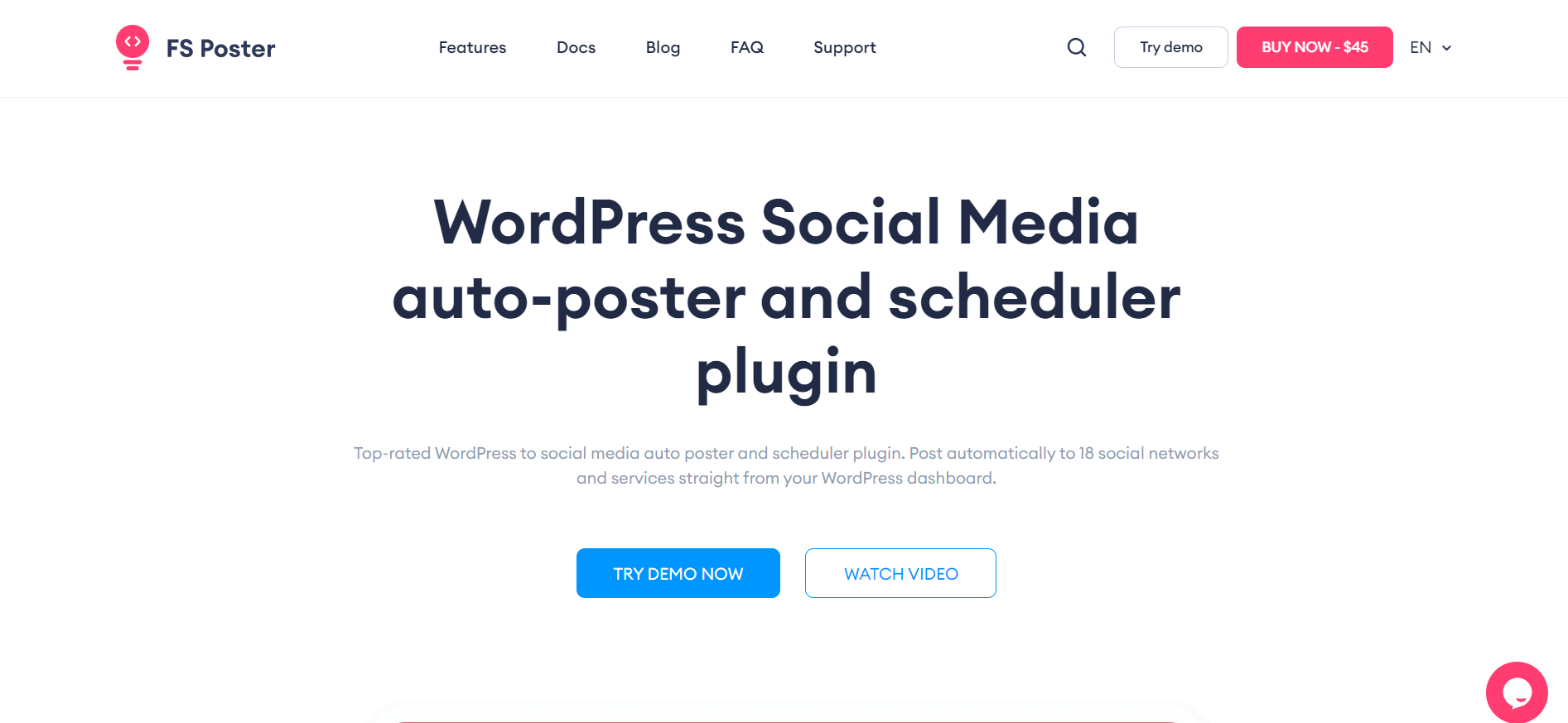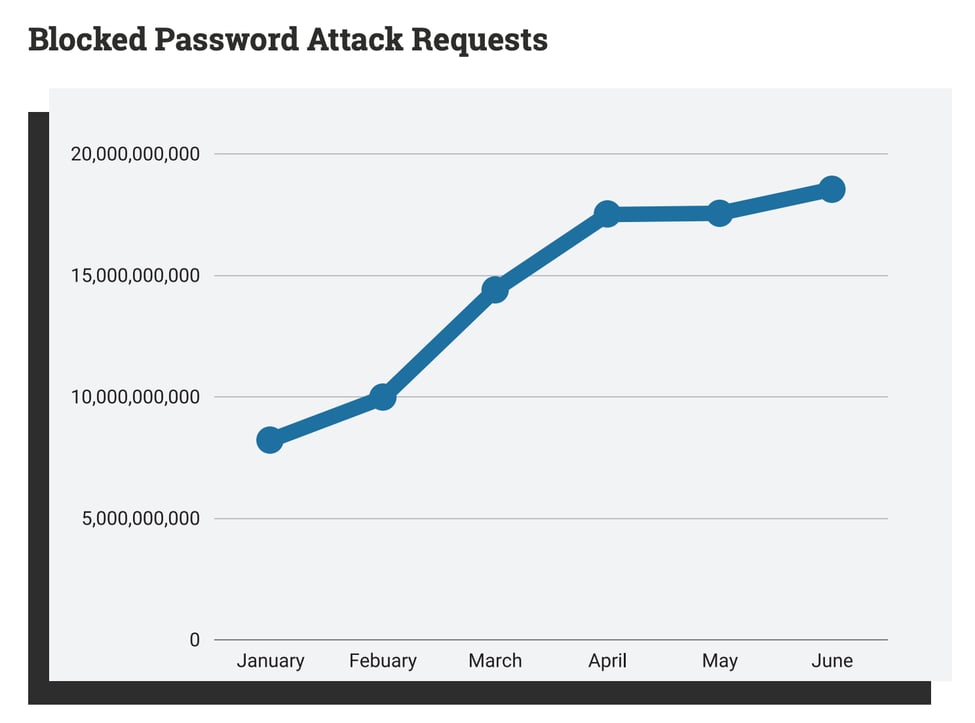
Saritel Abbaszade
Author
WordPress is the Content Management System, which is powering over 30% of all websites. However, as it increases in popularity, hackers have noticed and are starting to attack WordPress pages directly. So how to make a WordPress site secure?
Why do you need WordPress Security?
There are many reasons why you need to keep your WordPress website secure. First, WordPress is a content management system (CMS) that powers millions of websites around the world. That means if a hacker were to find a way to exploit a security vulnerability in WordPress, they could potentially affect millions of websites.
Second, because WordPress is so popular, it is a prime target for hackers. Hackers know that if they can find a way to exploit a WordPress website, they can potentially gain access to a large number of websites.
Third, if your WordPress website is hacked, it could damage your reputation and cost you money. If hackers are able to access your website and deface it or add malicious code, it could reflect poorly on your business, and you could lose customers. And, if your website is used to distribute malware or phishing scams, you could be liable for damages.
How safe is WordPress?
While no website is 100% secure, WordPress is a fairly secure platform. The WordPress core team works hard to address security vulnerabilities as they are discovered. And, because WordPress is open source, the community can help to identify and fix security issues.
Over 86 billion password assault requests have been stopped by the Wordfence firewall so far in the first half of the year 2021. The statistics and patterns have been analyzed, and the results show that the number of assaults on users' passwords will continue to rise. Wordfence stopped 8,227,887,615 attempts to break in using brute force in January 2021. This number has more than doubled, with about 18,552,519,601 brute force attempts being stopped in only the month of June 2021 alone.
Resource: Wordfence
Concerns regarding the security of WordPress
What, then, is the potential fallout for someone who decides to ignore all of these figures and makes no effort to safeguard their WordPress website? As it turns out, a significant amount. The following are the most typical forms of cyberattacks carried out against WordPress websites:
Brute-Force login attempts
This is one of the more straightforward forms of assault. A brute-force login is when an attacker makes use of automated software to enter a large number of username and password combinations in a concise amount of time in an attempt to guess the correct credentials. The hacking technique known as brute force may be used to access any password-protected data, not simply logins.
Scripting that spans many sites (XSS)
An attacker is said to have used XSS when they "injected" malicious code into the backend of the target website to steal information and wreak havoc on the site's operation. This code might be added in the backend through more complicated techniques, or it could be supplied simply as a response in a form that is presented to the user.
Injections into databases
This type of attack is also known as a SQL injection, and it takes place when an adversary sends a string of malicious code to a website by way of some user input, such as a contact form. After that, the website will save the code to its own internal database. A malicious piece of code is executed on the website, much like an XSS attack, to retrieve or compromise sensitive information that is saved in the database.
Backdoors
A backdoor is a file that contains code that enables an attacker to access your website at any time by allowing them to circumvent the usual WordPress login screen. It is common practice for attackers to hide backdoors among other WordPress source files, making it more difficult for users with less skill to locate them. Even after the backdoor has been deactivated, attackers can continue to circumvent your login by writing variations of it and employing those.
Even while WordPress restricts the file formats that users may upload in an effort to cut down on the risk of backdoors, this is still a significant issue that should be kept in mind.
Attacks using the Denial-of-Service (DoS) Protocol
As a result of these assaults, authorized users are unable to access their own websites. The most common method of conducting a denial of service attack is to bring down the targeted server by flooding it with excessive traffic. The consequences are exacerbated in the event of a distributed denial-of-service assault, also known as a DDoS attack, which is a DoS attack that is carried out by several machines at the same time.
Phishing
Phishing is the act of an attacker contacting a target while pretending to be a genuine business or service and asking for sensitive information. In most cases, the target of a phishing effort will be persuaded to hand over personal information, download malicious software, or visit a malicious website. In the event that an adversary gains access to your WordPress account, they may even coordinate phishing assaults on your clientele while pretending to be you.
Hotlinking
When another website displays embedded content (often an image) housed on your website without your permission, this practice is known as "hotlinking," It gives the impression that the other website owns the content. Although it is more analogous to theft than a full-fledged attack, hotlinking is typically illegal and causes serious problems for the victim. The victim must pay every time content is retrieved from their server and displayed on another website, which results in the victim incurring high costs.
How to make your WordPress website secure?
In this guide, we'll go over our tips for keeping your WordPress site secure.

Pick a good domain hosting company
Choosing a hosting service that offers several layers of protection is the safest way to keep your site secure. It can sound enticing to select a low-cost hosting provider; after all, saving money on website hosting helps you to invest it elsewhere in your business. This route, however, should not be taken. It will, and sometimes does, lead to nightmares in the future. Your information could be deleted, and your URL could start redirecting to a different location.
When you pay a little more for a top hosting provider, you get extra levels of encryption automatically applied to your website.
Another advantage of having a decent WordPress hosting service is that you can significantly speed up the WordPress domain.
Try not to use nulled theme
Premium WordPress themes are more polished looking and have more customization opportunities than free themes. However, it may be argued that you get what you pay for. Premium themes are designed by experienced developers and checked to pass several WordPress tests straight out of the box. Customizing the theme is unregulated, and you'll get full help if anything goes wrong on your site. Most notably, you'll get daily theme updates.
There are, however, a few websites that sell nulled or cracked themes. A nulled or cracked theme is a premium theme that has been compromised and made available by illicit means. They are, therefore, very hazardous on the website.
Install a security plugin for WordPress
Regularly testing your website's protection against malware is time-consuming. Because you keep your knowledge of coding standards up to date, you do not even understand you're looking at malware written into the document. Most people, luckily, have acknowledged that not everyone is a developer and have developed WordPress protection plugins to assist. A protection plugin looks after your site's safe, checks for ransomware, and keeps an eye on it 24/7 to see what's going on.
Create a safe password
Passwords are a vital aspect of website security that is frequently ignored. If you're using a simple password like "123456, abc123, password," you can update it right away. This password is simple to recall, but it is also simple to guess. A sophisticated user can quickly crack your password and gain access to your account without difficulty. It's critical to use a complicated password, or better still, one created automatically using a mix of numbers, incomprehensible letter variations, and special characters like percent or.
Try to disable the editing of files
There is a code editing feature in your WordPress dashboard that helps you edit your theme and plugins when you're setting up your platform. Appearance>Editor is where you'll find a code editing feature. You can also use the plugin editor.
We recommend that you uninstall this function until your site is online. Hackers will insert subtle, malicious code into your theme and plugin if they obtain access to your WordPress admin panel. The coding is always so quiet that you won't know something is wrong until it's too late. Paste the code into your wp-config.php file to uninstall the ability to edit plugins and theme files.
Set up an SSL Certificate
SSL, or Secure Sockets Layer, is also widely used by all websites. Initially, SSL was used to make a website safe for particular transactions, such as payment processing. Today, however, Google has recognized its significance and gives SSL-enabled websites a higher ranking in their search results.
SSL is needed for any site that handles sensitive data, such as passwords or credit card numbers. The data between the user's web browser and your web server is delivered in plain text if you don't have an SSL license. Hackers will be able to decipher this. Using an SSL certificate encrypts confidential information until it is sent between their browser and website, making it more difficult to read and your site's security.
Change the URL of your WordPress login page
The address for logging into WordPress is “yoursite.com/wp-admin” by default. If you leave it as is, you avoid being the victim of a brute force attack aimed at breaking your username/password combination. You can receive a large number of spam registrations if you allow users to register for subscription accounts. Adjust the admin username URL or apply a security query to the registration and login tab to avoid this.
Add a 2-factor authentication plugin to your WordPress site to secure your login page. To obtain access to your site, you would need to have extra security as you attempt to log in.You will also see which IP addresses with the most unsuccessful login attempts and block them.
Limit the log-in
WordPress requires people to attempt to log in as many times as they like by default. Although this can help recall which letters are capitalized, it also exposes you to brute-force attacks. Users will try a limited amount of times before they are temporarily stopped by restricting the number of login attempts. The hacker is locked out until they can complete their attack, limiting the chances of a brute force attack.
Hide the directories wp-config.php and .htaccess
While covering your site's .htaccess and wp-config.php files to deter hackers from accessing them is a sophisticated process for upgrading your site's protection, it's a decent idea if you're concerned about your security.
We firmly advise experienced developers to adopt this option, as it's essential to take a backup of your site first and proceed with caution. Any error could render your website unavailable.
Your WordPress version should be updated
It is a good idea to keep your WordPress up to date to keep your website stable. Developers allow a few improvements in each release, and security features are periodically modified. By keeping your applications up to date, you can further prevent yourself from becoming a victim of pre-identified loopholes and vulnerabilities that hackers can use to obtain access to your website.
It's also essential to keep the plugins and themes up to date for the same reasons. WordPress installs minor upgrades instantly by chance. Significant changes, on the other hand, must be rendered directly from the WordPress admin dashboard.
Use plugins that are safe
Using safe plugins is so critical for your WordPress website’s security. There are a lot of plugins for WordPress. Not all of them are safe for your website. Before installing them, you have to know if they are safe or not. Maybe you have a business, and you want to install an auto-poster plugin for your social media posts. While looking for the right plugin for you, try to learn about the security of the plugin.
For example, FS Poster is one of the best social media auto poster plugins. This plugin is safe for your WordPress website. FS Poster has a lot of features for you. Try the demo version and see these features.

To log in, use your email address
To log in to WordPress, you must first type your username. Using an email ID instead of a username is a more secure approach. The causes are self-evident. Usernames are easy to guess, but email addresses are not. Furthermore, every WordPress user account is given a unique email address, which serves as a valid identifier for logging in. Several WordPress protection plugins allow you to build login pages that enable all users to log in with their email addresses.
Don’t use the “admin” username
You can never use "admin" as the username for your critical administrator account when installing WordPress. Hackers can easily infer such an easy-to-guess username. They need to find out the secret, and the whole website is compromised.
Make daily backups of your WordPress account to keep it secure
There's still space for growth, no matter how stable your WordPress site is. But, regardless of what happens, keeping an off-site copy somewhere is probably the safest antidote. You can restore your WordPress site to a working state at any time if you have a backup. Some plugins can help you with this.
Keep your software and plugins up-to-date
One of the most important things you can do to keep your WordPress site secure is to make sure that your software and plugins are always up-to-date. WordPress releases security updates on a regular basis, and it’s essential to install these updates as soon as they’re available.
You can configure WordPress to install updates automatically or manually update your software by logging into your WordPress dashboard and going to the Updates section.
In addition to updating WordPress itself, you should also make sure that all of your plugins and themes are up-to-date. Most plugin and theme developers release updates whenever a new security vulnerability is discovered.
If you’re unsure whether a plugin or theme is up-to-date, you can find out by checking the plugin’s homepage or the WordPress.org plugin repository.
Protect your login credentials, and don't share them with anyone else
Another important step to keep your WordPress site secure is to protect your login credentials and ensure you don't share them with anyone else. Your username and password are the keys to your website, so keeping them safe is essential.
Final Thoughts
You may wonder "how to make wordpress website secure" and look for answers. Then you are in the right place. The website's stability is so critical. Hackers will quickly target your site if you don't keep your WordPress protection up to date. We have listed some tips for making your WordPress website secure. If you follow these tips, you can keep your website secure.











